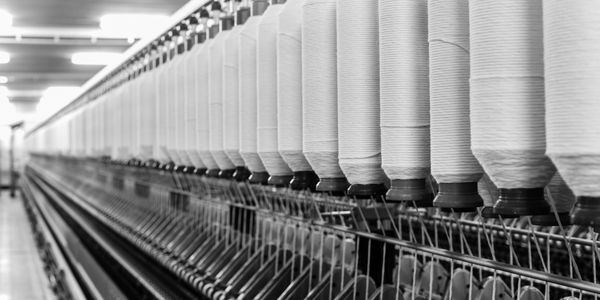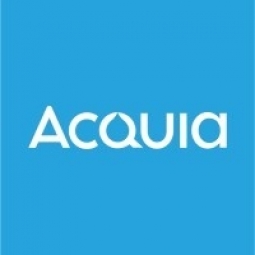Technology Category
- Analytics & Modeling - Computer Vision Software
- Functional Applications - Enterprise Asset Management Systems (EAM)
Applicable Industries
- Apparel
- E-Commerce
Use Cases
- Asset Health Management (AHM)
- Clinical Image Analysis
Services
- System Integration
About The Customer
Fanatics, Inc. is a leading online retailer of sports apparel, equipment, and merchandise. The company is the official partner to Nike and several national sports leagues throughout the U.S. Fanatics operates a popular e-commerce site and boasts an impressive lineup of partners and customers. The company's product content management team, which includes 200 marketers and seven global studios, produces content for more than a million products each year and distributes assets to over 700 internal teams, partners, and customers.
The Challenge
Fanatics, Inc., a popular online retailer of sports apparel and merchandise, faced a significant challenge in managing their vast array of digital assets. The company's product content management team, consisting of 200 marketers and seven global studios, struggled with a network of shared folders that made it difficult to locate specific files. This lack of a centralized, self-serve content repository led to costly workflow inefficiencies, often making it faster to shoot a new image than to find an existing one. The sports world's fast-paced nature further compounded these challenges, as real-time events often dictated the images and content Fanatics needed to create, edit, distribute, publish, or even eliminate. Without a search-friendly solution to house their digital assets, Fanatics was at a crossroads, risking their revenue potential and winning reputation.
The Solution
Fanatics identified a digital asset management (DAM) solution as the answer to their speed and agility challenges. In 2015, they implemented Acquia DAM, a search-friendly system that significantly improved their operations. Acquia DAM uses metadata to make assets searchable within the system, eliminating the need to dig through numerous folders. It also serves as a centralized distribution hub, organizing all raw digital assets and product imagery for easy access by internal teams, partners, and customers. Furthermore, Acquia DAM enables audit and archive, allowing Fanatics to automatically expire or pull down digital assets based on critical dates or events captured in their metadata. The system also provides data and insights that help Fanatics understand how their content is being used and keep the system clean and organized.
Operational Impact
Quantitative Benefit

Case Study missing?
Start adding your own!
Register with your work email and create a new case study profile for your business.
Related Case Studies.

Case Study
Fire Alarm System and Remote Monitoring Sytem
Fire alarm systems are essential in providing an early warning in the event of fire. They help to save lives and protect property whilst also fulfilling the needs of insurance companies and government departments.Fire alarm systems typically consist of several inter-linked components, such as smoke detectors, heat detector, carbon monoxide, manual call points, sounders, alarm and buzzer. The fire alarm system should give immediate information in order to prevent the fire spread and protect live and property.To get maximum protection a shoe manufacturer in Indonesia opted for a new fire alarm system to monitor 13 production sites spread over 160 hectars. Although the company had an existing fire alarm system, it could not be monitored remotely.It was essential that the new system would be able to be monitored from a central control room. It needed to be able to connect to the existing smoke detector and manual call point. Information should be easily collected and passed on to the Supervisory Control and Data Acquisition (SCADA) system. Furthermore, the system should have several features such as alarm management, auto reporting, being connected to many client computers without additional cost, and run 24/7 without fails. The company also needed a system which could be implemented without changing the architecture of the existing fire alarm system.

Case Study
IoT Applications and Upgrades in Textile Plant
At any given time, the textile company’s manufacturing facility has up to 2,000 textile carts in use. These carts are pushed from room to room, carrying materials or semi-finished products. Previously, a paper with a hand-written description was attached to each cart. This traditional method of processing made product tracking extremely difficult. Additionally, making sure that every cart of materials or semi-finished products went to its correct processing work station was also a problem. Therefore, the company desired an intelligent solution for tracking assets at their factories. They also wanted a solution that would help them collect process data so they could improve their manufacturing efficiency.

Case Study
Retailer Uses RFID Scanner to Improve Efficiency
Patrizia Pepe wished to improve the logistics of their warehouse: accepting incoming goods from their production sites, movement of items throughout
the warehouse, and packaging of goods for distribution to the retail locations. They initially tried to use barcodes for this function. Because barcodes must be individually scanned within a line-of-sight, the acceptance of goods coming into the warehouse was too time consuming. Working with the University of Florence, Patrizia Pepe instituted a five-month pilot project beginning in August of 2009 to test the validity of an RFID solution. The pilot involved tagging of about 60,000 items for the second seasonal collection, and convinced the company to move forward with tagging all items.

Case Study
Monitoring and Controlling Automatic Mixing and Dispensing Machines
As technology advances, textile manufacturing has been transformed from a labor-intensive to a partially or fully automated industry. Automation is significant in all segments of textile production - from spinning to printing, and textile machinery manufacturers are constantly searching for new technologies and automation processes will increase the productivity of their machines. The color paste mixing and dispensing machine is an essential part of the printing and dyeing process. With the advantage of automatically computerized controls and database management, the system can significantly improve its dispensing precision, working efficiency and production quality as well as reducing material consumption.

Case Study
Digital Transformation of Atlanta Grout & Tile: An IoT Case Study
Atlanta Grout & Tile, a Tile, Stone & Grout restoration company based in Woodstock, Georgia, was facing challenges with its traditional business model. Despite steady growth over the years, the company was falling behind the web revolution and missing out on the opportunity to tap into a new consumer base. They were using independent software from different vendors for each of their department information and workforce management. This resulted in a lot of manual work on excel and the need to export/import data between different systems. This not only increased overhead costs but also slowed down their response to clients. The company also had to prepare numerous reports manually and lacked access to customer trends for effective business decision-making.








